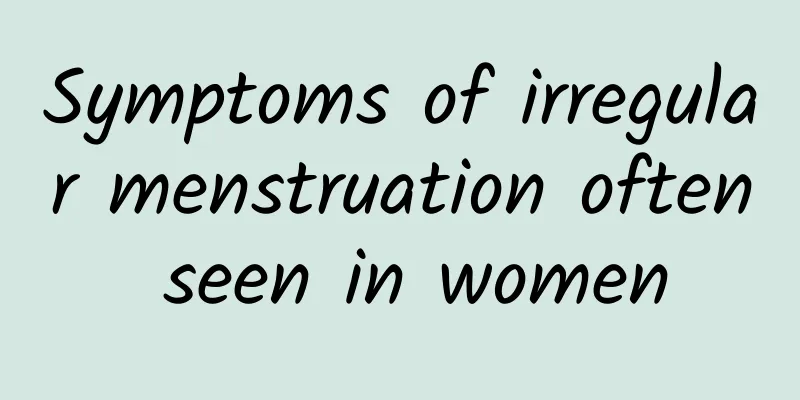What are the Western medical treatments for pelvic peritonitis?

|
I believe everyone is familiar with pelvic peritonitis. There are many patients with pelvic peritonitis around us in our lives. The occurrence of this disease has a certain impact on the physical health and life of these patients. The following will introduce in detail the treatments for pelvic peritonitis. 1. General treatment All patients should rest in bed and take a semi-recumbent position to facilitate the accumulation of exudate or pus in the pelvic cavity, thereby limiting the inflammation. Adequate nutrition and fluid infusion should be given, and electrolyte disorders and acid-base imbalances should be corrected. Physical cooling can be used when effective. Gastrointestinal decompression can be given for patients with severe abdominal distension. Unnecessary gynecological examinations should be reduced to avoid the spread of inflammation. 2. Antibiotic Treatment Patients with acute pelvic peritonitis should undergo bacterial culture of cervical secretions or posterior fornix puncture fluid, or blood culture and drug sensitivity test, and select effective antibiotics based on this. When the pathogen is unclear, gentamicin plus metronidazole can be used, which is effective against Escherichia coli and anaerobic bacteria. The specific usage is gentamicin 80,000 U, twice a day, intramuscular injection, 0.2% metronidazole 500 ml once a day, intravenous drip. You can also use 2.4 grams of Ansitrol, add liquid to intravenous drip, once a day, and take Ansitrol tablets 0375 in the evening to enhance the efficacy; in addition, vanguard mycin b, kelforon, erythromycin, fosfomycin sodium, etc. can all be used. When the results of bacterial culture and drug sensitivity test are detected, it should be decided whether to replace the antibiotic based on the results of drug sensitivity test and the efficacy of the first selected antibiotic. Generally, those with better efficacy can be replaced, but those with insignificant efficacy after 3 to 4 days of medication should be replaced in time. 3. Surgical treatment 1. Incision and drainage: When pelvic peritonitis causes abscess formation and the abscess has reached the pelvic floor, incision and drainage can be performed through the posterior fornix. However, since the abscess is located in the abdominal cavity, drainage can only temporarily relieve symptoms and often cannot cure the disease. 2. Laparotomy to remove the lesion: When a pelvic abscess forms and ruptures, laparotomy can be performed to remove the lesion while controlling the infection with large amounts of antibiotics. This is the most effective and rapid method. |
<<: Principles of treatment of pelvic peritonitis
>>: What are the treatments for pelvic peritonitis?
Recommend
Common causes of ectopic pregnancy
The phenomenon of ectopic pregnancy is quite comm...
What are the diagnostic methods for pelvic peritonitis?
Pelvic peritonitis refers to inflammation of the ...
Be careful about overusing your eyes! Nutritionist's eye protection formula, eat more DHA and other 8 nutrients
Eyes are the windows to the soul. Many people hop...
How to use medical abortion
When love is at its peak, the stimulation of horm...
What are the surgical treatments for ectopic pregnancy?
Experts say: Ectopic pregnancy, also known as ect...
What is postmenopausal uterine fibroid disease? What are the symptoms of postmenopausal uterine fibroid disease?
What is postmenopausal uterine fibroid disease? W...
How much does uterine fibroid surgery cost?
The cost of uterine fibroid surgery varies depend...
What are the symptoms and phenomena of female cervicitis? There are 4 abnormal conditions of female cervicitis.
The cervix has a great impact on female friends, ...
Why is the abortion not done cleanly? Is the hospital responsible if the abortion is not done cleanly?
Why is the abortion not done cleanly? Is the hosp...
How to prevent bacterial vaginosis
Gynecological diseases are indeed very common in ...
Sitting for a long time and not moving enough will make you gain 3 pounds. Here are 4 magic tricks to fight obesity! Weight loss doctor: Accurate weight loss to prevent weight regain, are you following along?
Many people stayed at home during the epidemic pr...
Is it better to let menopause take its natural course or take medicine to regulate it?
If menopausal symptoms are mild, it is usually be...
No more weight gain! Try vegetable and fruit jelly for enzyme weight loss
The weather is getting hotter and hotter, so this...
What are the common treatments for vaginitis in clinical practice?
The occurrence of vaginitis brings great harm to ...
Three common misunderstandings about the treatment of cervical cancer Six traditional Chinese medicine prescriptions for cervical cancer
In recent years, more and more women have been su...









